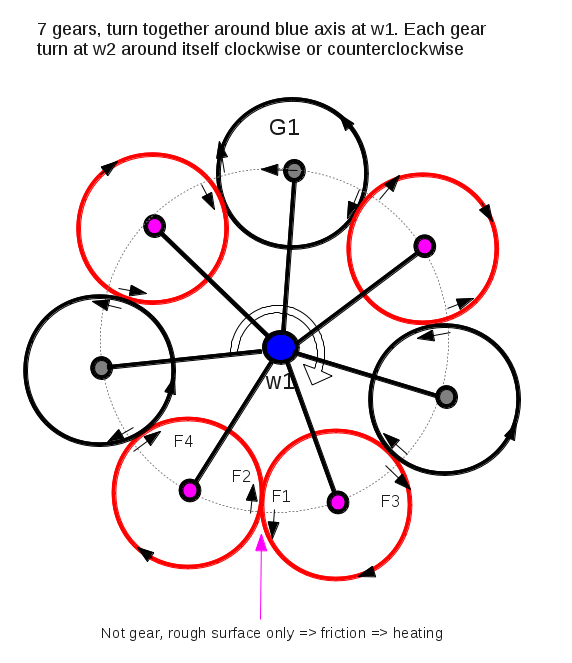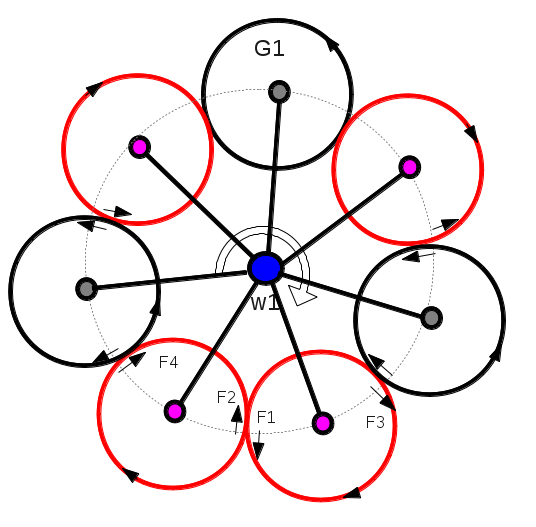As a newbie in physics I imagine this device and I would like to know why it can't increase its energy.
The device:
I imagine 7 gears in rotation around blue axis in clockwise. Each gear has a mass $m$. In the same time, gears are turning at $w2$ around themselves. One clockwise next one counterclockwise like gears. But like I have 7 gears (odd number), 2 gears rotate in the same direction (2 red gears at bottom). I know 2 red gears at bottom can't turn like gears but I don't want gears but friction, it's possible to imagine a part of gear with rough surface only and study the device during a little while. So, between these gears I would like only friction. This friction give heating and forces $F1$ and $F2$, others gears give forces too, $F3$, $F4$ etc. I try to draw all forces but maybe I'm wrong.
G1 can have mass or not
If I want I can take a gear (or 5 gears except 2 reds where there is friction) without mass (or very low in practise). In this case how energy can be the same (I count all energies, heating too) ?
To draw forces, I'm starting from forces F1 and F2 and after I draw forces at right and at left in the same time, until I arrive at G1 (I'm not sure).
1/ G1 has mass. If energy is constant I can say that a torque on a gear is equal to the torque on blue axis.

2/ G1 don't have mass. The torque on blue axis seems to be higher than 1/

3/ With 2 red disks only (not others gears), there is the same torque on disk, a torque on blue disk, but there heating too. The heating seems to be an extra energy.
The cycle is:
- I launch gears at $w1$ and $w2$ without friction between red/red gears, this step need the energy $E$. Friction is OFF.
- I set friction ON between red/red gears
- I count all energies (heating too), $E$ must be constant. I'm interesting about the transcient analysis when there is friction between red/red gears. From time $t=0$ to $t=t_x$, with $t_x$ very small.
How $E$ could be constant?
Note:
I need to press 2 red gears at bottom for have friction, but I don't drawn these forces.
I guess no friction elsewhere than red/red gears surface.
I don't believe in perpetuum mobile but I imagine devices, and like puzzles to resolve, I try to understand how the sum of energy is conserved, like that I learn physics in the same time. It's like a game for me.
